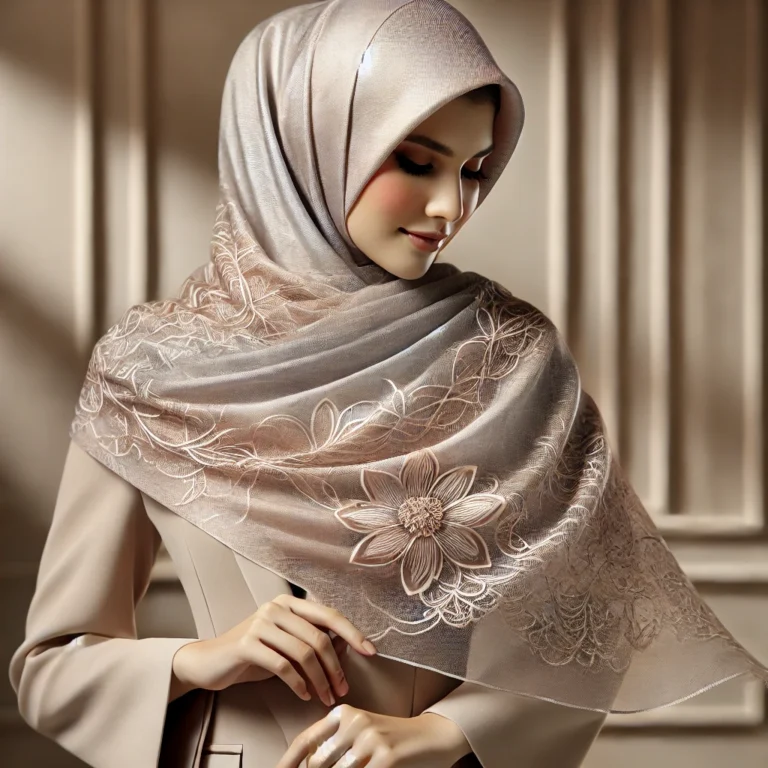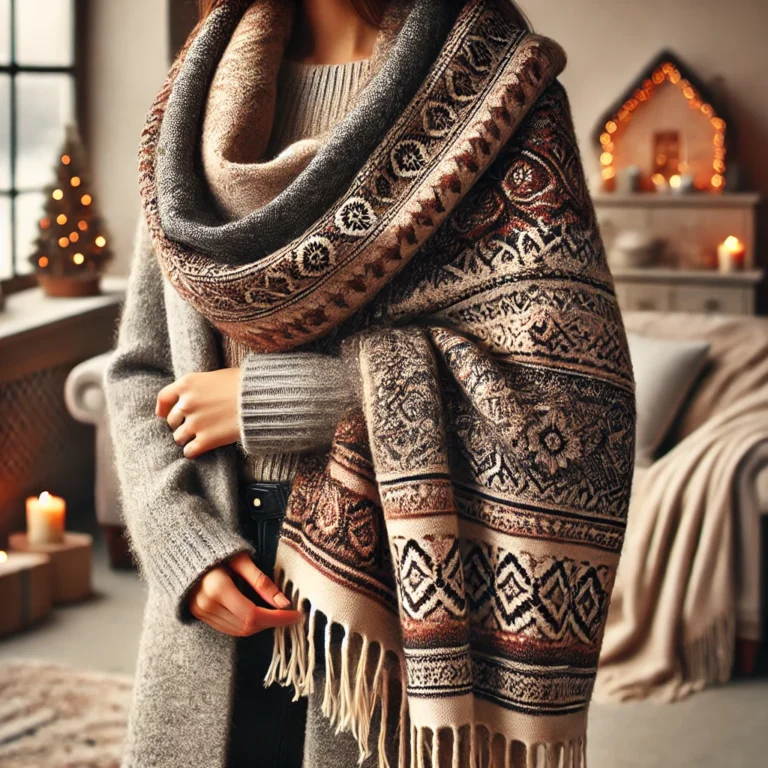Kalamkari shawls are famous for their intricate artwork and rich history. Originating from India and Persia, these shawls are known for their beautiful hand-painted and block-printed designs. People love these shawls because they offer a unique blend of tradition and modern style. Whether made of cotton, silk, or pashmina, they are a perfect addition to anyone’s wardrobe.
Thesis statement: Kalamkari shawls are admired for their one-of-a-kind artwork and deep cultural roots.
History of Kalamkari Shawls
Kalamkari shawls have a long history that traces back to ancient India and Persia. The word “Kalamkari” comes from “kalam,” meaning pen, and “kari,” meaning work, referring to the hand-painting done on the fabric. Traditional techniques like hand-painting and block-printing are still practiced by artisans, mainly in Andhra Pradesh and Gujarat in India. These shawls were originally made for royalty and continue to be popular for their artistic value.
Example: In a small village in Andhra Pradesh, families have passed down the art of Kalamkari from generation to generation, using natural dyes and traditional methods to create stunning pieces of art.
What Makes Kalamkari Shawls Special?
These shawls are made from a variety of materials like cotton, silk, and even pashmina. Each shawl is a piece of art, with intricate designs and vibrant colors that stand out. The use of natural dyes, like indigo and turmeric, adds to their uniqueness. The detailed patterns often depict stories from Indian mythology, floral designs, or animals, making each shawl special.
Case Study: In recent years, Kalamkari shawls have gained global attention, especially among eco-conscious fashion lovers. The use of natural dyes and sustainable materials makes them a popular choice for people who want to support traditional crafts while being environmentally friendly.
Types of Kalamkari Shawls
1. Pashmina Kalamkari Shawls: Luxury Meets Art
Pashmina Kalamkari shawls are a luxurious version of the traditional shawl. The softness and warmth of pashmina wool, combined with Kalamkari art, create a masterpiece. These shawls are perfect for winter and special occasions.
Example: A pashmina Kalamkari shawl can be seen as a statement piece at high-end fashion events, showing the blend of traditional craftsmanship with luxury.
2. Kashmiri Kalamkari Shawls: A Regional Twist
Kashmiri Kalamkari shawls mix the intricate patterns of Kalamkari with the elegance of Kashmiri shawls. These shawls often feature a blend of paisley and floral designs, making them unique and beautiful.
Example: During festivals in Kashmir, women often wear these shawls, which beautifully combine local craftsmanship with ancient techniques.
3. Embroidered Kalamkari Shawls: Adding Extra Flair
Embroidered Kalamkari shawls have detailed embroidery work that adds extra charm to the hand-painted designs. This fusion of embroidery and Kalamkari art is highly valued for its elegance.
Example: A bride at a traditional Indian wedding can be seen wearing an embroidered Kalamkari shawl, which adds sophistication to her look.
Benefits of Kalamkari Shawls
These shawls are not only beautiful but also practical. They offer several benefits:
- Unique Style Statement: Wearing a Kalamkari shawl makes you stand out due to its artistic design.
- Durability: High-quality materials like silk and pashmina ensure that these shawls last for years.
- Comfort: Cotton and pashmina shawls are comfortable and perfect for all seasons.
- Cultural Significance: Owning a Kalamkari shawl connects you with ancient Indian art and tradition.
Styling Tips for Kalamkari Shawls
These shawls are versatile and can be styled in various ways:
- Casual Wear: Drape a light cotton Kalamkari shawl over a simple outfit for a casual yet stylish look.
- Formal Events: Pair a silk or pashmina Kalamkari shawl with traditional attire for weddings or formal gatherings.
- Mixing and Matching: You can mix Kalamkari shawls with modern outfits, such as jeans and a top, to create a fusion look.
Occasions to Wear Kalamkari Shawls
These shawls are perfect for various occasions:
- Weddings: These shawls add a touch of elegance to bridal outfits or traditional wedding guest attire.
- Parties: Wearing a vibrant Kalamkari shawl to a party makes a bold fashion statement.
- Festivals: During Indian festivals, many women wear Kalamkari shawls as part of their traditional outfits.
Celebrity Inspiration: Kalamkari Shawl Styles
Many celebrities have embraced Kalamkari shawls for their uniqueness. Bollywood stars are often seen wearing these shawls at film festivals or cultural events.
Example: Actress Vidya Balan has been spotted multiple times in a Kalamkari shawl, pairing it with traditional sarees to create a beautiful blend of culture and fashion.
Care and Maintenance
These shawls require special care to maintain their beauty:
- Washing and Drying: Always hand wash Kalamkari shawls in cold water to protect the natural dyes.
- Storage: Store them in a cool, dry place, away from direct sunlight, to avoid color fading.
- Maintenance: Regularly check for loose threads or minor damage and have them repaired to ensure longevity.
Budget-Friendly Kalamkari Shawl Options
These shawls can range from affordable to luxurious, depending on the materials and craftsmanship. Online platforms offer a variety of options to suit different budgets, so everyone can enjoy the beauty of these shawls.
Example: E-commerce platforms like Etsy and Amazon offer a wide range of Kalamkari shawls, allowing customers to choose based on their budget and style preference.
Conclusion
Kalamkari shawls are more than just fashion items; they are a celebration of art and tradition. Their unique designs, vibrant colors, and cultural significance make them a must-have in any wardrobe. Whether you choose a pashmina, embroidered, or Kashmiri Kalamkari shawl, you’ll be adding a piece of history and elegance to your collection.
In case you are wondering about reliable source – here’s detail description of wholesale markets across India



